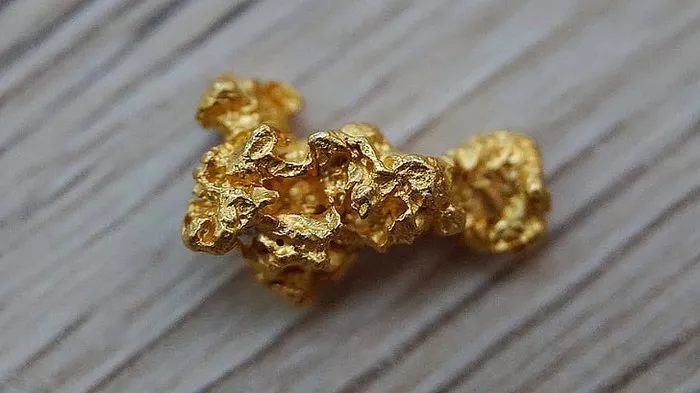Gold is a precious metal that has captivated humans for centuries, prized for its beauty, rarity, and inherent value. When it comes to purchasing or owning gold, understanding its purity is crucial. Gold is measured in karats (k), with 24k representing pure gold. However, many jewelry pieces contain lower karat values, often mixed with other metals for durability. This article will guide you through various methods to check gold karat at home, helping you determine the authenticity and quality of your gold items.
Understanding Gold Karats
What is a Karat?
A karat (not to be confused with carat, which measures gemstones) is a unit of measurement for gold purity. The karat system defines the proportion of gold in an alloy compared to other metals. Here’s a quick breakdown:
24k Gold: 99.9% pure gold
22k Gold: 91.7% pure gold
18k Gold: 75% pure gold
14k Gold: 58.3% pure gold
10k Gold: 41.7% pure gold
Importance of Knowing Gold Karat
Knowing the karat of your gold is essential for several reasons:
Value Assessment: Higher karat gold is generally worth more due to its greater gold content.
Durability: Lower karat gold is more durable and less likely to bend or scratch, making it suitable for everyday wear.
Resale and Investment: Accurate karat assessment is critical for resale value, ensuring you receive a fair price.
Methods to Check Gold Karat at Home
1. Visual Inspection
Hallmarks and Stamps
One of the first steps in verifying gold purity is to look for hallmarks or stamps. Genuine gold jewelry often has a karat stamp indicating its purity, such as 24k, 18k, or 14k.
What to Look For:
Common Stamps: Look for numbers like 10, 14, 18, 22, or 24, often found on the inside of rings, clasps, or hidden areas of jewelry.
Maker’s Mark: Many reputable jewelers include a unique mark, which can also help verify authenticity.
Color and Luster
While not definitive, the color and luster of gold can provide clues about its karat content.
Observations:
24k Gold: Bright yellow and shiny.
18k Gold: Slightly less yellow, often has a warmer hue.
14k Gold: Duller and may appear more pale, often with a slightly reddish tint if alloyed with copper.
2. Magnet Test
Gold is not magnetic. If your gold item is attracted to a magnet, it likely contains other metals.
Steps:
Use a strong magnet (neodymium magnets work well).
Bring the magnet close to your gold item.
If the item is attracted, it’s not genuine gold.
3. The Acid Test
The acid test is a more accurate method to determine gold purity. It involves applying nitric acid to a small scratch made on the gold item.
Materials Needed:
Gold testing acid kit (available online or at jewelry supply stores)
A small file or scratch stone
Gloves and safety goggles
Steps:
Scratch Test: Use the file to make a small scratch on an inconspicuous area of the gold item.
Apply Acid: Put a drop of acid corresponding to the karat you wish to test on the scratch.
Observe Reaction:
If the gold color remains unchanged, the item is likely that karat or higher.
If it changes color, the item is of lower purity.
4. Density Test
The density test involves measuring the weight and volume of the gold piece to calculate its density, which can help determine its karat.
Steps:
Weigh the Item: Use a precise scale to weigh the gold piece in grams.
Water Displacement Method:
Fill a graduated cylinder with water and note the level.
Submerge the gold item and note the new water level.
Calculate the volume of water displaced (new level – original level).
Calculate Density:
Density= Weight of Gold/Volume Displaced
Compare Density: Compare the calculated density with known densities of gold karats:
24k: 19.32 g/cm³
18k: 15.58 g/cm³
14k: 12.86 g/cm³
10k: 11.43 g/cm³
5. The Ceramic Scratch Test
This method involves scratching the gold against an unglazed ceramic plate.
Steps:
Find an unglazed ceramic plate or tile.
Gently scratch the gold piece across the surface.
Observe the Mark:
If it leaves a gold mark, it’s likely real gold.
If the mark is black, the item is not genuine gold.
6. Ultrasonic Test
An ultrasonic testing device can analyze the thickness and density of gold without damaging it. While this method may be less accessible for home use, it can be rented or found at some jewelry stores.
Steps:
Follow the manufacturer’s instructions to operate the device.
Place the gold item on the testing surface.
Read the results, which will indicate the karat level.
Tips for Accurate Testing
Use Multiple Methods: For best results, combine several testing methods to confirm your findings.
Clean Your Gold: Ensure the item is clean and free of dirt or oils before testing.
Be Cautious: Some tests, especially the acid test, can damage the gold if not performed carefully.
Conclusion
Determining the karat of gold at home can be a straightforward process if you follow the right methods. From visual inspections to more advanced techniques like the acid test or density calculation, each method offers valuable insights into your gold’s purity. By knowing how to check gold karat, you empower yourself to make informed decisions about buying, selling, or appraising gold jewelry. Whether for personal knowledge or investment purposes, understanding gold’s authenticity and value is essential in today’s market.
Related topics:
- Does 18K Gold Have Resale Value? A Detailed Analysis
- 22K vs. 24K Gold: Which is the Best Choice for You?
- How to Sell Old Gold Jewelry for Cash: A Complete Guide


